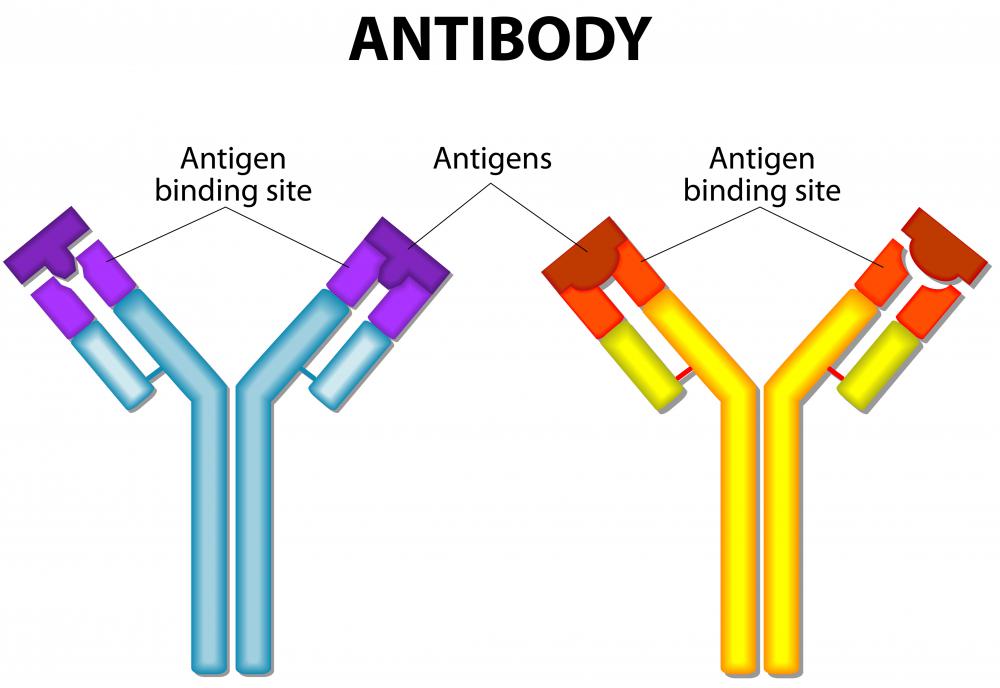At TheHealthBoard, we're committed to delivering accurate, trustworthy information. Our expert-authored content is rigorously fact-checked and sourced from credible authorities. Discover how we uphold the highest standards in providing you with reliable knowledge.
What Is Atypical Lymphocytosis?
Atypical lymphocytosis occurs when lymphocytes, specific types of white blood cells, respond to antigen exposure. Lymphocytes often become atypical in response to an infection by bacteria or a virus. They can also become atypical from a large invasion of other antigens, such as allergens or fungi.
Lymphocytosis is the term used to describe when white blood cells, particularly lymphocytes, are elevated. Each type of white blood cell has a different role in helping the immune system fight off antigens. T cell lymphocytes trigger antibody production. B cell lymphocytes detect the presence of antigens and stimulate other white blood cells in response.

While issues such as cancer or sexually transmitted diseases do cause an increase of white blood cells, they are not usually responsible for creating atypical lymphocytosis. An increase of lymphocytes occurs directly as a response to antigen exposure in the body. The term is just another way to describe normal immune system functions.
Atypical lymphocytosis is most commonly attributed to viral and bacterial illnesses. It can also be a result of some types of autoimmune disorders. Immunizations, drug reactions, and radiation or chemotherapy treatments can also cause elevated lymphocytes to become atypical.

A person of any age can develop atypical lymphocytosis, but there are some people who are more susceptible than others. Children under the age of two do not have a developed immune system. Adults with connective tissue diseases or otherwise weakened immune systems may have an increase of atypical lymphocytes. Patients with acute or chronic leukemia may also have an occurrence of atypical lymphocyte increases.

To determine the presence of atypical lymphocytosis, doctors perform standard blood tests. The lymphocyte count in the sample should be elevated. Once the increase is discovered, a peripheral blood smear is performed. A drop of blood is smeared onto a glass slide. The sample is dried, stained with a dye, and then dried again. Atypical lymphocytes will stain a darker blue than regular lymphocytes.

Treatments for atypical lymphocytosis will vary. The proper treatment will depend on the cause of the lymphocyte increase. If underlying conditions are the cause, they must be treated. For common causes, such as viral or bacterial invasions, antibiotics can help reduce cell counts to normal levels.
Prescription medications are highly effective common treatments, but they are only one part of the treatment plan. Vitamin supplements, particularly vitamins B and C, can also be beneficial. Vitamins can aid the efforts of the immune system. Increasing healthy foods is an additional option.
AS FEATURED ON:
AS FEATURED ON:




















Discussion Comments
I think, as I recently found, that there are some other reasons such as infection that may also cause atypical lymphocytes in the peripheral blood cells.
@turkay1-- I think there is also something called chronic lymphocytosis where there is atypical lymphocytosis and the levels are abnormally high without a specific problem to treat.
It's also asssociated with a type of acute leukemia that develops really slowly over a long period of time. There is atypical lymphocytosis that doesn't change but there is nothing to treat at that point.
So I guess atypical lymphocytosis is kind of tricky to figure out. There can be different things going on. If someone is told that they have atypical lymphocytosis, I don't think they should jump to conclusions. It may not be as serious as it appears.
@ysmina-- the lymphocytes itself are not bad. But if there's too many of them in the blood, it's a warning that something serious is going on. The lymphocytes are actually doing us a favor. By increasing in numbers, it lets us know that it's fighting some kind of an antigen and needs some outside support.
This is the case with almost all infections. The way we know that there is an infection in the body is by checking for the cells that fight it. Think of lymphocytes as soldiers, the more soldiers the body sends to fight something, the stronger the enemy must be.
It's pretty normal for people to have 1% or 1.5% atypical lymphocytosis. But when it's higher than this, doctors need to figure out the cause of it so that it can be treated. The higher it is, the more serious it is.
It's also one of the symptoms that help identify infectious diseases. For example, infectious mononucleosis almost always shows atypical lymphocytosis. So it helps doctors with the diagnosis as well.
If lymphocytes help fight infections in the body and they naturally increase in numbers when there is an infection, why is atypical lymphocytosis a problem?
Wont't the person get over their infection faster when there are more lymphocytes?
What happens if atypical lymphocytosis is not diagnosed and medications aren't given? Does it cause damage to the body if lymphoctye levels remain high like that?
Post your comments